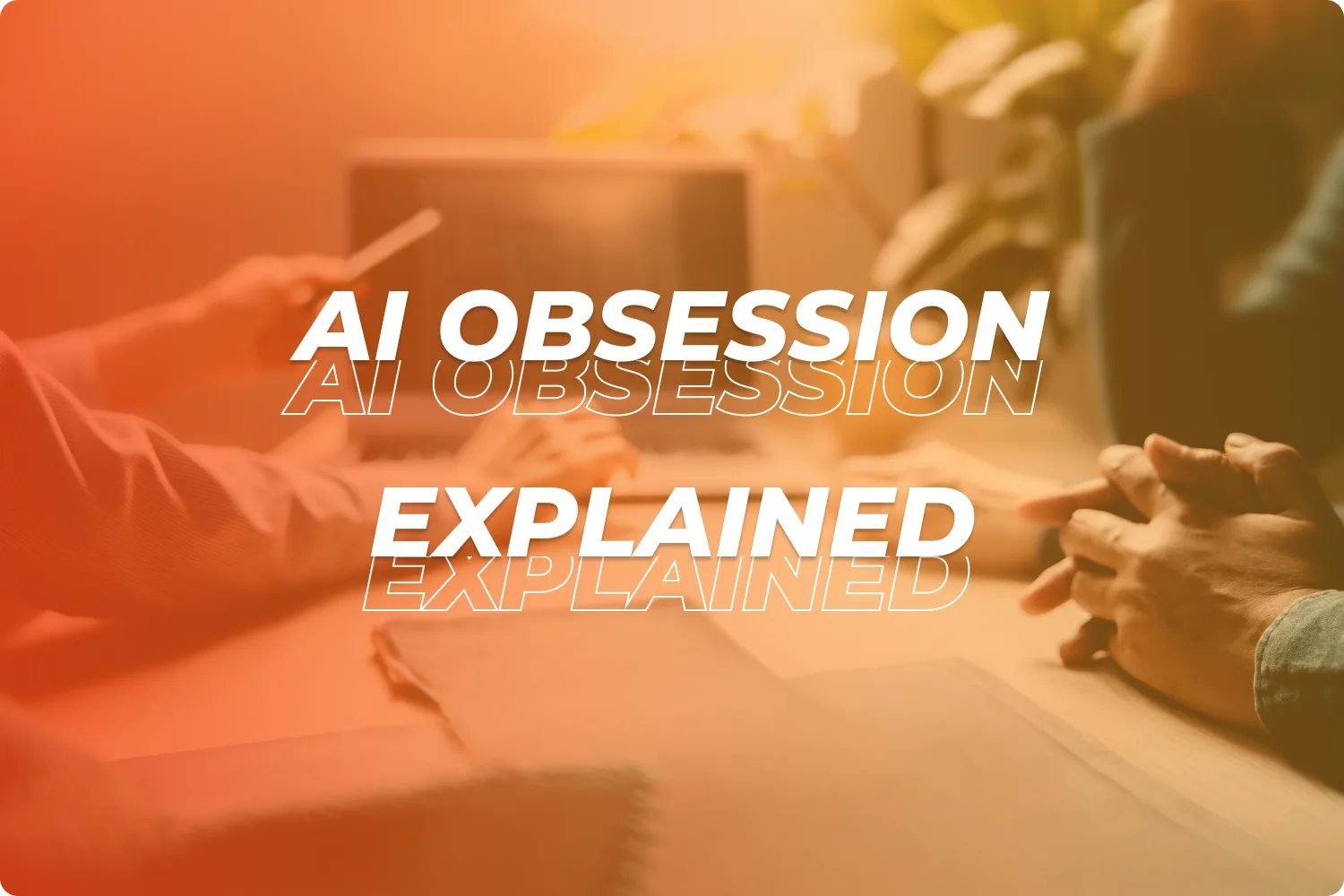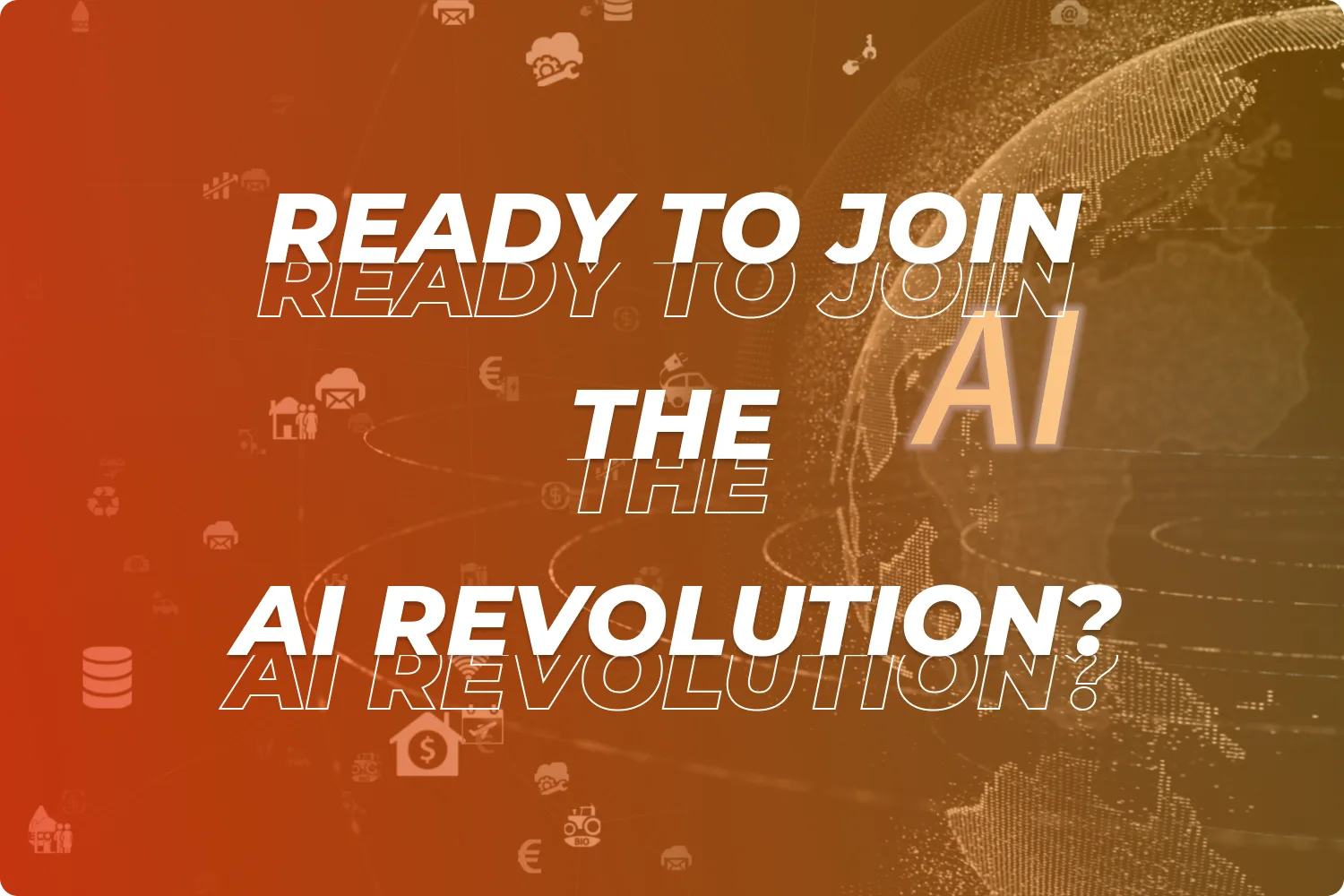Picture this scene. It's Monday morning in Singapore's CBD. While one company struggles with spreadsheets and manual data entry, their competitor across the street just automated their entire reporting process. One team gains a full day’s advantage—while the other stays late catching up.
This isn't science fiction anymore. Companies that adopt AI-driven software report significant gains in productivity and efficiency. According to McKinsey, generative AI could increase productivity across industries by up to 40% in specific tasks, while Accenture found that AI implementation can reduce operational costs by as much as 30% in certain use cases. Meanwhile, businesses stuck in the past? They're bleeding talent and losing customers to faster, smarter competitors.
Here's the thing - AI software has gone from "nice to have" to "can't survive without" faster than anyone predicted. And in Asia's business hubs? The transformation has been rapid and extraordinary.
Why Everyone's Suddenly Obsessed with AI Tools (And Why You Should Be Too)
Remember when having a website was optional? That's where businesses stand with AI right now, except the window's closing fast.
According to recent research, over 80% of enterprises will have used generative AI APIs or deployed AI-enabled applications by 2026, up from less than 5% in 2023. Singapore and Hong Kong are absolutely crushing it, with larger companies already leading the charge.
The money tells the story too. The global AI market is projected race past the trillion mark by 2031. Asia-Pacific? We're driving over a third of that growth. Between Singapore's Smart Nation push and Hong Kong going all-in on fintech innovation, if you're not using AI here, you’re operating at a significant competitive disadvantage.
Across industries, businesses are leveraging AI to solve real-world challenges. AI-powered route optimization can improve delivery efficiency in logistics by up to 20%, according to McKinsey research. Financial services firms are streamlining compliance review by automating document processing with AI—dramatically accelerating what used to be slow, manual checks. These aren't isolated success stories - they're becoming industry standards.
The best part? You don't need a PhD in computer science anymore. These tools are designed for regular people. Pay-as-you-go pricing means companies can start small. Integration takes days, not months. In most cases, hesitation comes down to unfamiliarity with the technology, not feasibility.
Productivity Tools That Actually Make Your Life Easier
Managing the daily flood of emails, meetings, and reports can drain productivity. That's exactly why these AI productivity tools are game changers. They're transforming how teams work across Singapore and Hong Kong.
Microsoft 365 Copilot - Microsoft Copilot is a game-changing addition to the modern workplace toolkit. Imagine having an assistant who never sleeps, never complains, and actually understands what you need. Copilot lives inside Word, Excel, PowerPoint - all your Microsoft apps. Do you need a report? Give it bullet points and get back professional documents. Excel analysis that usually takes hours, now it's done in minutes. Meeting notes? Copilot captured the meeting notes and prepared the action items. Companies save 8-12 hours per person every week. That's like getting an extra day back.
Notion AI changed how teams organize... well, everything. It's not just note-taking (though it's great at that). Think of it as your team's second brain. Dump in meeting notes, project ideas, random thoughts - Notion AI organizes it all and helps find connections everyone missed. Marketing agencies cut campaign planning time in half. Why? Because they stop wasting time hunting for that one document three months ago.
ClickUp AI brings project management into the future. But here's what's cool - it learns how teams work. After a few weeks, it starts predicting problems before they happen. "Hey, based on past projects, this task usually causes delays." Or "Sarah's overloaded next week, maybe reassign this?" It functions like a tireless project manager with perfect memory.
Slack AI solved the biggest remote work problem - information getting lost in endless chat threads. Now teams can ask "What did the design team decide about the logo?" and get an instant summary from three weeks of conversations. Tech companies across Hong Kong are using AI-powered collaboration tools to keep everyone in the loop—so teams spend less time in meetings and more time getting things done.
Project Management That Actually Works
Most project management processes are chaotic and hard to control. Deadlines slip, budgets explode, and nobody knows who's doing what. AI changes that game completely.
Asana AI is scary smart. Feed it project history, and it starts seeing patterns humans miss. It reveals insights like which task types typically cause delays or which team combinations work best together. Not to blame anyone—but to help plan better. In construction and other industries, companies are using these insights to finish projects faster and save significantly on major builds.
Monday.com's AI takes a different approach. Instead of just tracking work, it actively manages it. High-level goal? It breaks it down into tasks. Team member calls in sick? It redistributes work based on skills and availability. The AI even writes status updates (goodbye, Friday afternoon scramble to update the boss).
Zapier with AI is the duct tape of the internet—in the best way possible. It connects everything to everything else, and teams don’t need to code. Just tell it what you want: “When someone fills out our contact form, add them to our CRM and send a welcome email.” Just like that, the workflow is automated. Businesses are freeing up hours every week by eliminating repetitive data entry.
Trello's Butler AI keeps things simple for smaller teams. It watches how work flows, then suggests shortcuts. "Noticed cards move to 'Done' every Friday - want automation for that?" Perfect for teams who want AI benefits without the learning curve.
Customer Service That’s Always On — Without Burnout
Customers don't care that it's 2 AM or that your support team is swamped. They want answers now. AI makes that possible without burning out staff.
Intercom’s Fin AI is a major upgrade from basic chatbots. It understands real questions, reads your help docs, learns from past tickets, and handles complex queries in multiple languages. The real magic? It knows exactly when to escalate to a human. E-commerce teams use Fin AI to automate repetitive requests—so agents can focus on the conversations that matter most.
Freshworks Freddy AI enables support teams to significantly increase the number of customer inquiries they can handle without adding to their headcount. By automating ticket categorization, suggesting relevant responses, and proactively identifying at-risk customers, Freddy AI allows teams to resolve a large portion of support requests more efficiently. Companies using Freddy AI have reported faster response times, higher first-contact resolution rates, and the ability to manage a greater volume of inquiries with their existing staff, thanks to the platform’s advanced automation and AI-driven workflows.
HubSpot’s AI suite finally brings sales and marketing together. The AI scores leads, tells reps exactly when to call, generates personalized emails that don’t sound robotic, and predicts which deals are most likely to close. The result? Teams close deals faster and keep cash flow moving.
Zendesk AI sees the big picture. Beyond answering tickets, it spots trends. "Hey, 50 people asked about shipping to Malaysia this week - maybe update your FAQ?" It's like having a customer experience analyst working 24/7.
Making Business Data Work for You — Without Specialist Skills
Every business drowns in data. Sales figures, customer behavior, market trends - it's all there, but who has time to analyze it? AI does, and it does it brilliantly.
Tableau Pulse with Einstein AI transforms data analysis by making it conversational and intuitive. Users can simply ask questions in plain English—like “Why did sales drop in March?”—and instantly receive clear, visual answers, without writing SQL or building pivot tables. This approach empowers business users to uncover trends and insights from their data more easily, helping organizations make smarter decisions and, in many cases, realize significant savings and efficiencies by leveraging the data they already have.
Power BI with Copilot brings Microsoft's AI magic to business intelligence. Type questions, get charts. The AI even suggests what to look for: "Unusual spike in returns from Store #5 last Tuesday." Finance teams love it because it speaks their language but doesn't require IT support.
ChatGPT Enterprise for internal data is a game-changer. Connect it to company knowledge, and suddenly everyone has access to institutional wisdom. "What's our policy on remote work?" "Which client did we do that similar project for?" Instant answers from your own data. Law firms use it to tap decades of case knowledge in seconds.
Qlik Sense takes the "what if" approach. Instead of rigid reports, it lets users explore data freely while AI points out interesting connections. It often finds insights that traditional tools miss because they weren't looking in the right place.
AI-Powered Content That Feels Authentic
Creating content used to take entire days. Research, writing, editing, SEO optimization - exhausting. It significantly accelerates the content creation process.
Jasper AI produces content that sounds natural and engaging — not stiff or formulaic. Feed it brand guidelines, and it maintains voice across everything - blogs, emails, ads, social posts. The kicker? It remembers the context between projects. Marketing teams pump out 10x more content without losing quality or consistency.
Writesonic offers a flexible, all-in-one platform for diverse content needs. Need Facebook ads? Done. Whitepapers? Easy. Product descriptions? It’ll generate hundreds, each one unique. With built-in SEO, everything is optimized to rank better. Agencies can take on more projects and deliver client work faster—without expanding their team.
Surfer SEO uses real-time SERP data to deliver actionable, search-optimized recommendations. Instead of guessing what ranks, it analyzes current top results and provides exact recommendations—word count, keywords, structure, all data-driven. Sites that follow Surfer’s advice often see dramatic traffic growth in just a few months. That’s not optimization, that’s transformation.
MarketMuse plays the long game. It maps entire content strategies, finds gaps competitors miss, and predicts what'll perform before publication. Enterprise marketing teams swear by it to stay ahead of trends.
AI-Driven Cybersecurity for a New Era of Threats
Hackers use AI now. If businesses still use yesterday's security, they're bringing a knife to a gunfight. Modern AI security doesn't just defend - it hunts threats proactively.
CrowdStrike Falcon AI relies on behavioral analysis rather than signature-based detection. Even previously unknown threats are stopped in real time if they behave suspiciously. During recent ransomware waves hitting Asia, CrowdStrike customers stayed operational while others paid millions in ransom.
Darktrace has developed a network defense model inspired by the human immune system. It continuously learns what constitutes ‘normal’ behavior within each organization and autonomously responds to deviations. Suspicious file access at 3 AM or unauthorized device connections are detected and addressed instantly. Financial institutions value Darktrace’s ability to identify sophisticated threats that often bypass traditional, rule-based systems.
SentinelOne goes fully autonomous. Ransomware encrypts files? SentinelOne rolls them back automatically. No waiting for IT, no panic - just fixed. Small IT teams get enterprise-level protection without enterprise-level staff.
Palo Alto Networks Cortex XDR sees everything—endpoints, cloud, and network—as one battlefield. This unified view helps catch sophisticated attacks that move between systems. By focusing on real threats and reducing false alarms, it helps security teams avoid alert fatigue and respond faster to what matters most.
The Ugly Truth About AI Implementation
OK, let's get real. AI isn't magic, and implementation isn't always smooth. Here's what actually goes wrong and how to fix it.
Data quality remains the biggest hurdle. AI needs clean, organized information. Most companies discover theirs is scattered across 50 systems in 20 formats. Solution: Start with a data audit. Clean it up BEFORE buying AI tools. Building proper data foundations is boring but crucial for success.
Addressing Employee Resistance. Concerns about job security are common when introducing AI. Some employees may resist adoption out of fear that automation will replace their roles. The key is early engagement — demonstrate how AI can remove repetitive tasks so teams can focus on more meaningful work. Celebrate early wins to build internal momentum. For example, a receptionist who shifts into managing social media while AI handles call routing can become a powerful internal advocate.
Avoiding Integration Pitfalls. Legacy systems don’t always integrate seamlessly with modern AI tools. A 15-year-old CRM, for example, might require middleware or custom connectors. The solution is phased implementation: start with standalone AI tools, demonstrate value quickly, and then tackle integrations gradually. Expert guidance is highly recommended to avoid costly mistakes.
Managing Compliance with Confidence. Navigating regulations like Singapore’s PDPA or Hong Kong’s PDPO can feel overwhelming, especially in industries with strict privacy standards. The best approach is to select vendors with built-in compliance features, document every process, and schedule regular audits. It may not be exciting, but it’s essential.
Measuring ROI Effectively. Unlike traditional purchases, where return on investment is straightforward, AI delivers value across multiple dimensions — from increased productivity and fewer errors to enhanced customer experiences. These benefits can be harder to quantify without upfront planning. The solution is to define clear KPIs early on and track performance closely. Time saved, support tickets resolved, and faster deal cycles all contribute meaningfully to AI ROI.
Why FunctionEight? (More Than Just Great Tech Advice)
Look, anyone can sell software licenses. What businesses actually need is someone who's been in the trenches, understands local markets, and knows what works in Singapore and Hong Kong specifically.
FunctionEight specializes in helping companies navigate AI adoption successfully. Our approach focuses on understanding actual business problems (not what vendors want to sell), finding tools that solve those specific issues, implementing without disrupting operations, providing proper staff training (no boring manuals), and offering ongoing support and optimization.
We're vendor-agnostic. If Microsoft works best, great. If you need something else, that's fine too. Our only agenda is client success.
Time to Stop Watching and Start Doing
The gap between AI users and non-users isn't growing - it's exploding. If you don’t implement AI now, by next year you might be far behind. Good luck catching up.
Here's your action plan:
First, identify the biggest pain points. What wastes most time? Where do errors hurt most? What do customers complain about? Those are AI opportunities.
Next, audit what you have. Can current systems handle AI? Is data ready? Do people have basic skills? Be honest - wishful thinking leads to failed projects.
Then start small but start now. Pick one problem, one tool. Prove it works. Build confidence. Then expand. Perfect is the enemy of done.
Most importantly, get help if needed. This isn't the time for expensive experiments.
The future isn't coming - it's here. Companies using AI are already pulling ahead while others wonder what happened. Don't be the business still using fax machines in an email world.
Ready to join the AI revolution? FunctionEight's here to help. Let's build your competitive advantage before competitors build theirs.
Your Burning Questions, Answered
Q: How fast until we see ROI from AI tools? A: Realistically? Most businesses see improvements within weeks and positive ROI by month 3-6. Full transformation takes 12-18 months, but the difference is felt immediately.
Q: What about security? Is our data safe with AI? A: Choose vendors with SOC 2, ISO 27001 certifications. Use access controls. Audit regularly. With proper frameworks in place, AI tools are typically more secure than traditional spreadsheets on random laptops.
Q: Our systems are ancient. Can AI work with legacy stuff? A: Usually, yes. Modern AI tools have APIs and connectors for almost everything. Some old systems need middleware, but it's doable. Compatibility should be checked upfront to avoid surprises.
Q: What if our AI vendor disappears? A: Valid concern. Stick with established players. Keep data exports current. Don't put all eggs in one basket. Vendor stability should be part of any selection process.
Q: Do our people need to become techies? A: Nope. Today's AI tools are built for normal humans. Most staff need maybe 2-3 weeks of training, but it depends on the software. Power users might want more, but nobody needs to code. Training should be role-specific. Sales teams should learn sales-related skills, not programming.
Q: Build custom AI or buy existing tools? A: Unless you're doing something nobody's ever done before, buy. Custom AI costs 5-10x more than SaaS solutions. Existing tools are tested, supported, and updated regularly. Save custom development for truly unique competitive advantages.
Stop watching the AI revolution from the sidelines. Contact FunctionEight today and let's get your business future ready. Because tomorrow's leaders are being built today.









